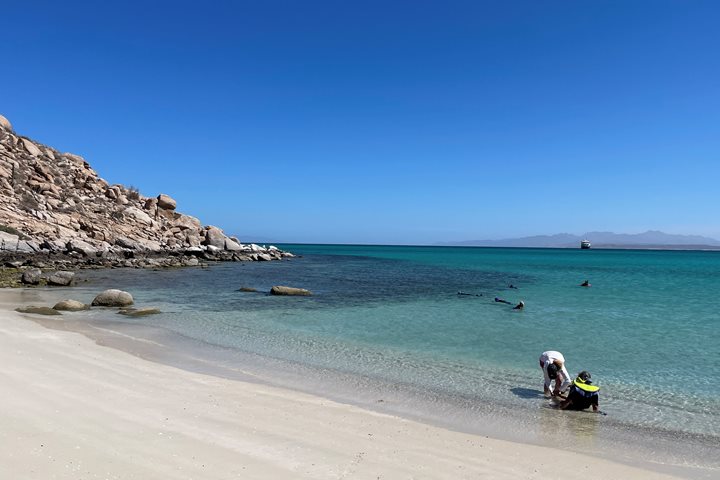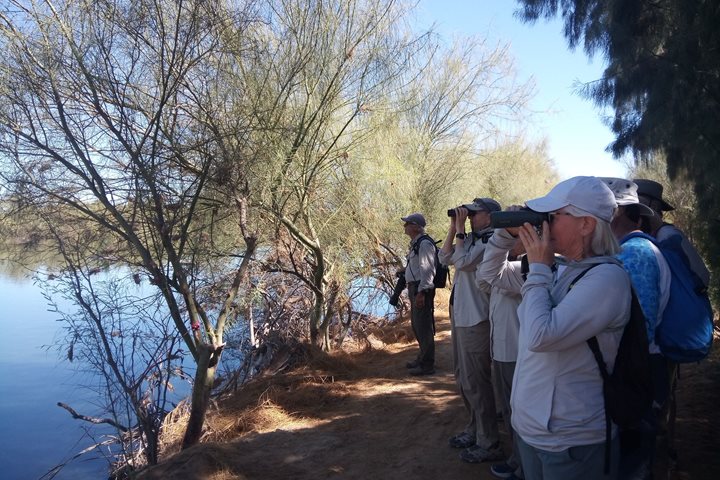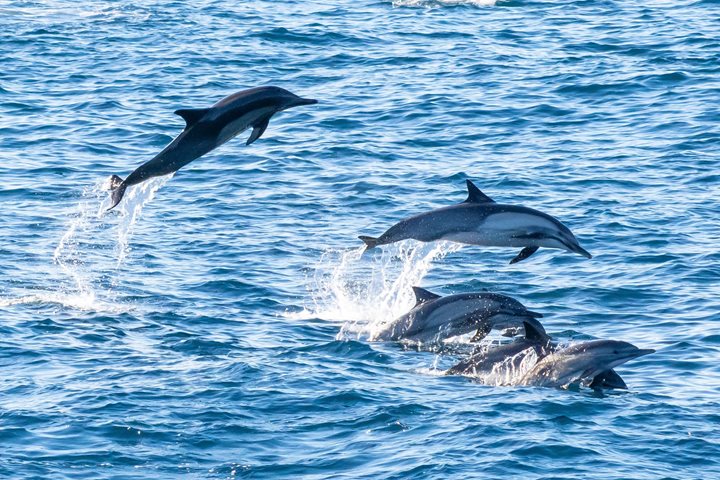Today we explored by hiking my favorite place in the Gulf of California, San Esteban Island. It is a highlight because it’s a natural laboratory of evolution that has produced two of the most amazing creatures: the spiny-tailed iguana and the piebald chuckwalla. Both animals are endemic but introduced to other islands, reputedly by the indigenous Seri. After thousands of years of isolation, they evolved into the interesting creatures we now know. Their behavior is awesome, with the spiny-tailed iguana (or ctenosaur, derived from its scientific genus, Ctenosaura) climbs to the cardon cacti’s tops to feed on the flowers and fruits, while the chuckwalla gets leaves, flowers, and fruits of diverse low desert plants at their reach. Our guests and naturalists walked on the wide and green arroyo and found these and other fascinating creatures, including endemic plants. It could not have been a better day!
- Daily Expedition Reports
- 16 Mar 2024
San Esteban Island, 3/16/2024, National Geographic Venture
- Aboard the National Geographic Venture
- Baja California
Adrian Cerda, Naturalist
Adrian studied biology at the national Autonomous University of Mexico. In 1991 the Wildlife Preservation Trust of Jersey, on Britain's Channel Islands, awarded Adrian with a scholarship to its prestigious 16-week training program in Captive Manageme...
Read MoreShare Report
Baja California: A Remarkable Journey
VIEW ITINERARYRelated Reports
3/14/2025
Read
National Geographic Venture
La Paz
La Paz, the capital city of Baja California Sur, is rich in culture, sights, and beauty. To enjoy our day in this lovely city, we set out for several activities: a tour of the city’s murals and art, a visit to the local eco-park to birdwatch, and a trip to historic El Triunfo. There is much to see in this wonderful region, and we were excited to explore. Our local guide showed us street art and told us stories about the city’s culture. We saw an impressive 47 species of birds on our walk! Lastly, the trip to El Triunfo showed us parts of the rich history of the area.
3/13/2025
Read
National Geographic Venture
San Jose del Cabo
This morning, we visited San Jose del Cabo for a morning of birding, photography, and exploring this lovely town on the southeast coast of Baja. Between the different birding groups, there were over sixty species spotted in the lush estuary on the edge of town. There was also some shopping done during the town visit, and the weather was perfect for both activities! In the afternoon, National Geographic Venture cruised north while looking for wildlife, and we were not disappointed. Humpback whales and a megapod of common dolphins entertained us until the sun was setting and cocktail/recap hour began. It was a great end to a very special day!







